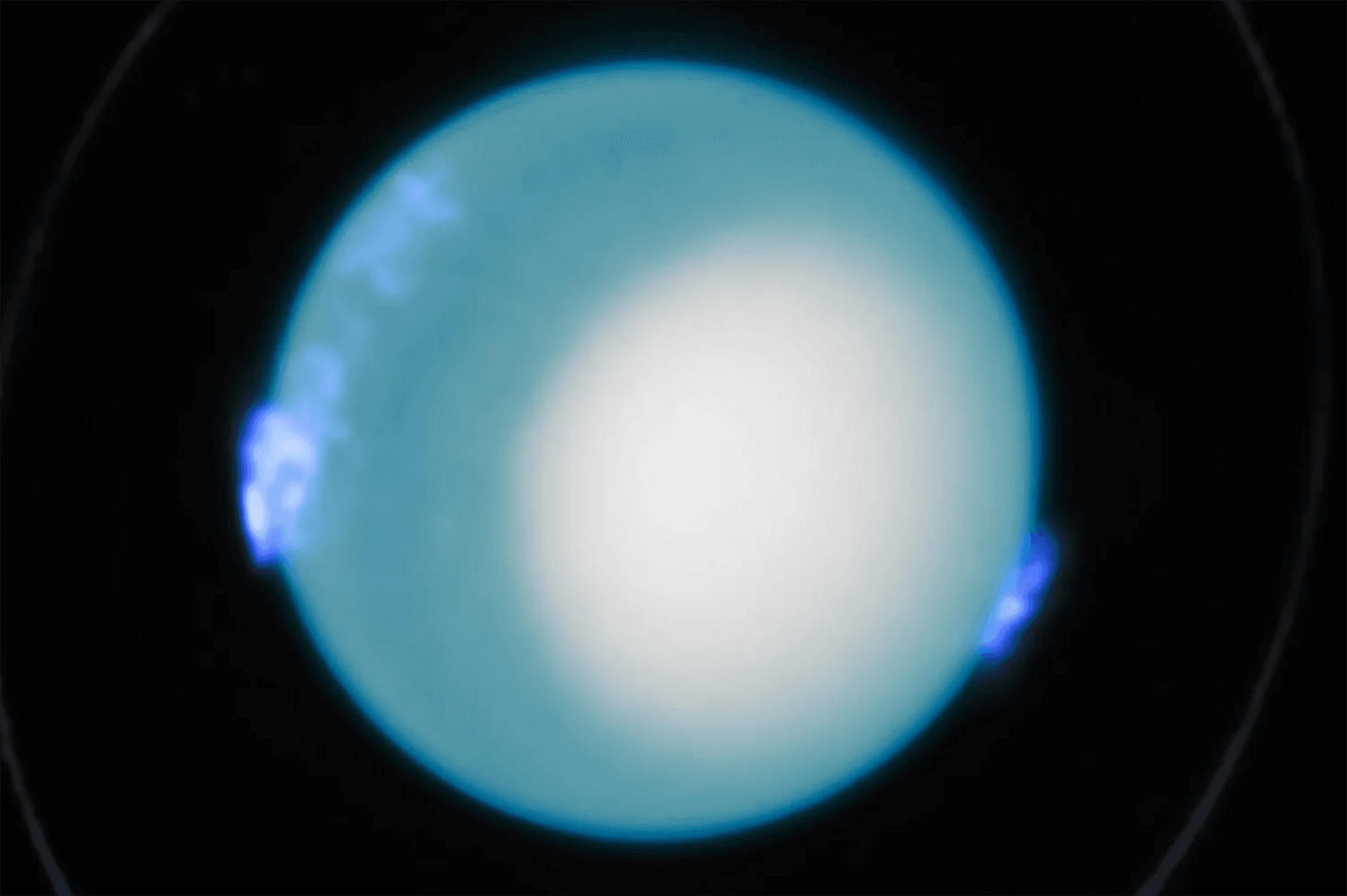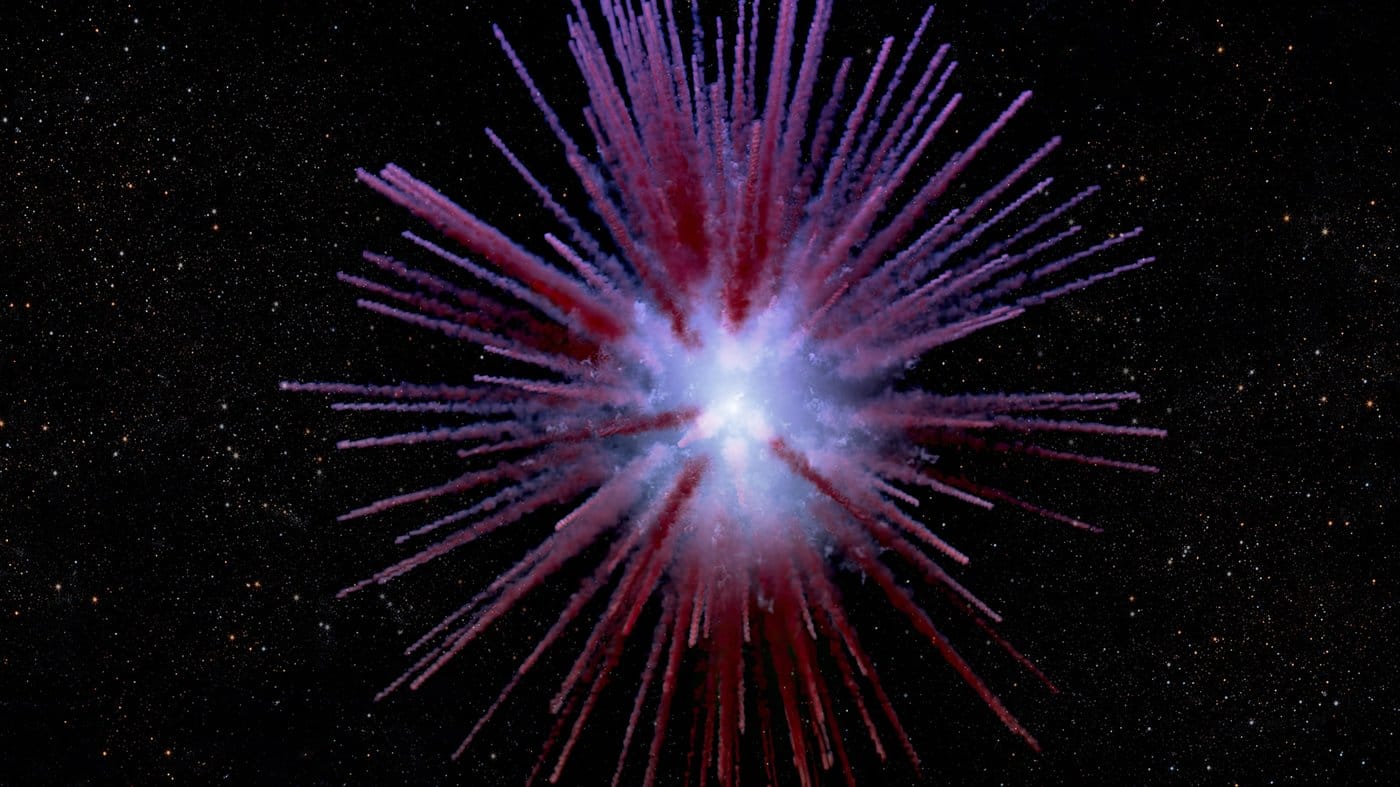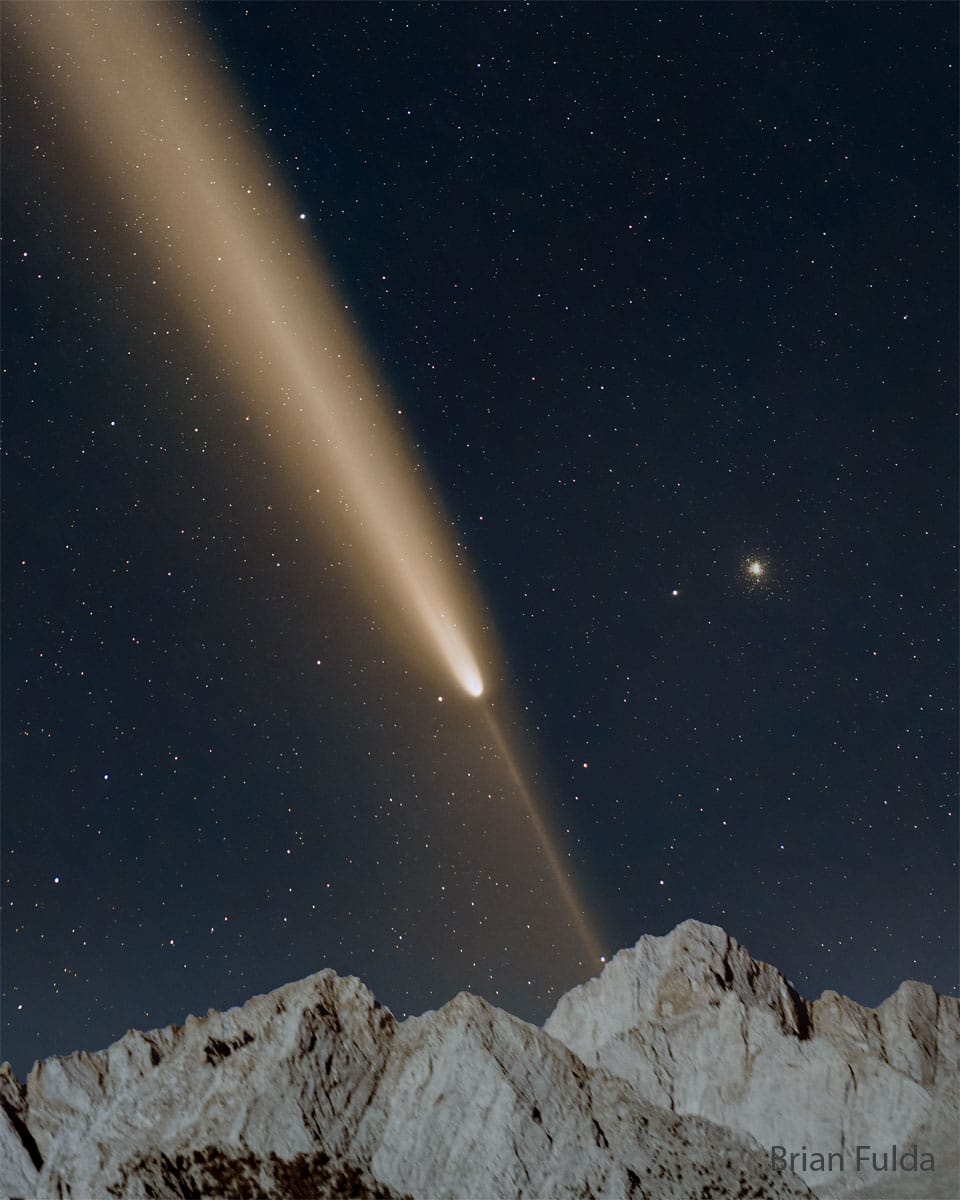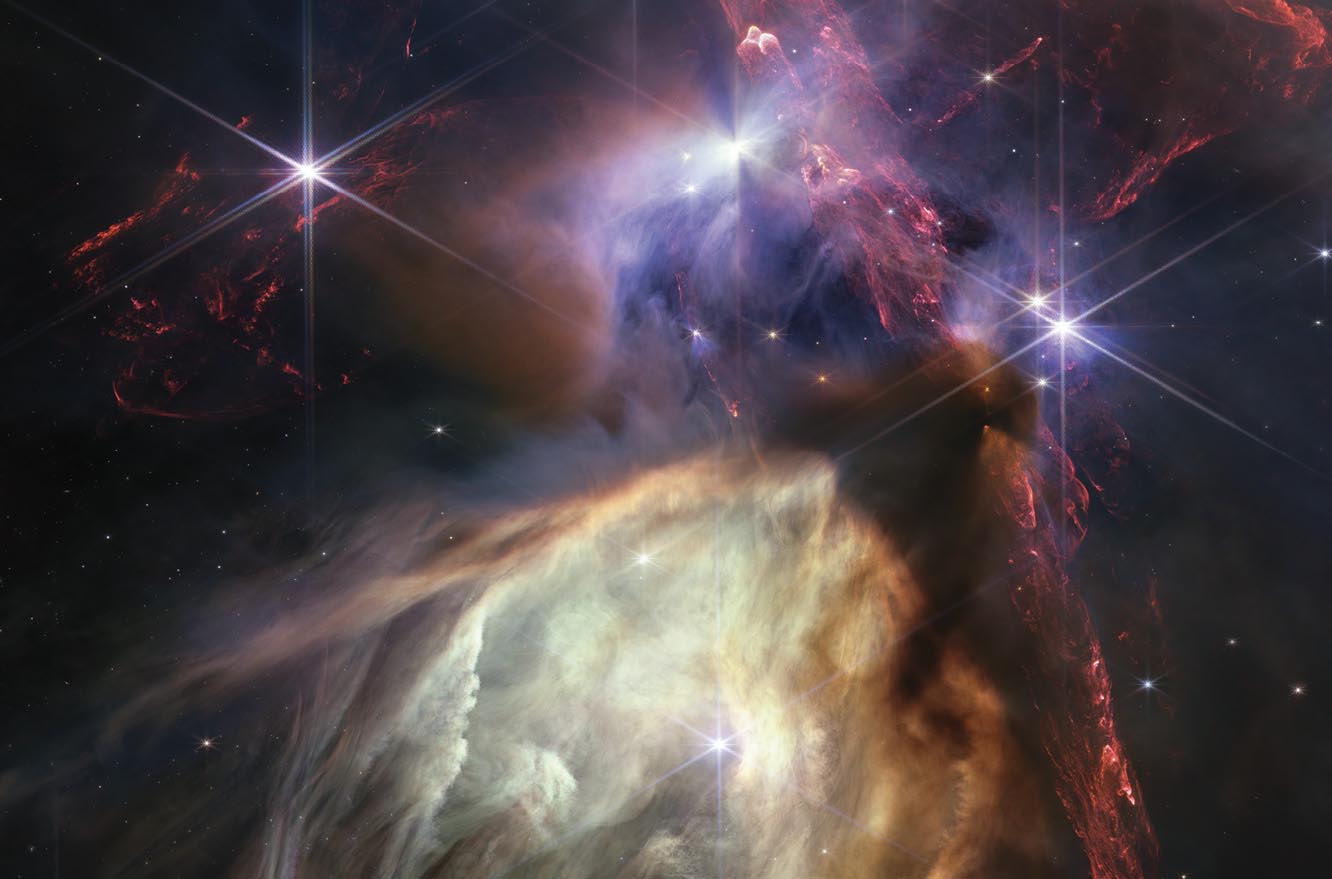Uranus is one of our solar system’s oddest planets. An ice giant, it spins on its side. We originally estimated its rate of rotation using measurements from Voyager 2, the only spacecraft to have visited the planet. But that measurement was so imprecise that within two years, astronomers could no longer use it to predict where the planet’s poles were. Now a new study, drawing on over a decade of Hubble observations of Uranus’s auroras, has pinned down the planet’s rotation rate far more precisely: 17 hours, 14 minutes, and 52 seconds. While that’s within the original measurement’s 36-second margin of error, the new measurement has a margin of error of only 0.036 seconds. In addition to helping plan a theoretical future Uranus mission, this more accurate rotation rate allows researchers to reexamine decades of data, now with certainty about the planet’s orientation at the time of the observation. (Image credit: ESA/Hubble, NASA, L. Lamy, L. Sromovsky; research credit: L. Lamy et al.; via Gizmodo)
Tag: astronomy

Inside an Alien Atmosphere
Studying the physics of planetary atmospheres is challenging, not least because we only have a handful of examples to work from in our own solar system. So it’s exciting that researchers have unveiled our first look at the 3D structure of an exoplanet‘s atmosphere.
Using ground-based observations, researchers studied WASP-121b, also known as Tylos, an ultra-hot Jupiter that circles its star in only 30 Earth hours. One face of the planet always faces its star while the other faces into space. The team found that the exoplanet has a flow deep in the atmosphere that carries iron from the hot daytime side to the colder night side. Higher up, the atmosphere boasts a super-fast jet-stream that doubles in speed (from an estimated 13 kilometers per second to 26 kilometers per second) as it crosses from the morning terminator to the evening. As one researcher observed, the planet’s everyday winds make Earth’s worst hurricanes look tame. (Image credit: ESO/M. Kornmesser; research credit: J. Seidel et al.; via Gizmodo)

A Stellar Look at NGC 602
The young star cluster NGC 602 sits some 200,000 light years away in the Small Magellanic Cloud. Seen here in near- and mid-infrared, the cluster is a glowing cradle of star forming conditions similar to the early universe. A large nebula, made up of multicolored dust and gas, surrounds the star cluster. Its dusty finger-like pillars could be an example of Rayleigh-Taylor instabilities or plumes shaped by energetic stellar jets. (Image credit: NASA/ESA/CSA/JWST; via Colossal)

An Exoplanet’s Supersonic Jet Stream
WASP-127b is a hot Jupiter-type exoplanet located about 520 light-years from us. A new study of the planet’s atmosphere reveals a supersonic jet stream whipping around its equatorial region at 9 kilometers per second. For comparison, our Solar System’s fastest winds, on Neptune, are a comparatively paltry 0.5 kilometers per second. The team estimates the speed of sound — which depends on temperature and the atmosphere’s chemical make-up — on WASP-127b as about 3 kilometers per second, far below the measured wind speed. The planet’s poles, in contrast, are much colder and have far lower wind speeds.
Of course, these measurements can only give us a snapshot of what the exoplanet’s atmosphere is like; we don’t have altitude data, for example, to see how the wind speed varies with height. Nevertheless, it shows that exoplanets beyond our planetary system can have some unimaginably wild weather. (Video and image credit: ESO/L. Calçada; research credit: L. Nortmann et al.; via Gizmodo)

Jets, Shocks, and a Windblown Cavity
As material collapses onto a protostar, these young stars often form stellar jets that point outward along their axis of rotation. Made up of plasma, these jets shoot into the surrounding material, their interactions creating bright parabolic cavities like the one seen here. This is half of LDN 1471; the protostar’s other jet and cavity are hidden by dust but presumably mirror the bright shape seen here. (The protostar itself is the bright spot at the parabola’s peak.) Although the cavity is visibly striated, it’s not currently known what causes this feature. Perhaps some form of magnetohydrodynamic instability? (Image credit: NASA/Hubble/ESA/J. Schmidt; via APOD)

Beneath a River of Red
A glowing arch of red, pink, and white anchors this stunning composite astrophotograph. This is a STEVE (Strong Thermal Emission Velocity Enhancement) caused by a river of fast-moving ions high in the atmosphere. Above the STEVE’s glow, the skies are red; that’s due either to the STEVE or to the heat-related glow of a Stable Auroral Red (SAR) arc. Find even more beautiful astrophotography at the artist’s website and Instagram. (Image credit: L. Leroux-Géré; via APOD)

A Dandelion-Like Supernova Remnant
In 1181 CE, astronomers in China and Japan recorded a new, short-lived star in the constellation Cassiopeia. After burning for nearly six months, this historic supernova disappeared from the naked eye. It was only in 2013 that an amateur astronomer identified a nebula in the vicinity of that supernova, and, in the years since, astronomers have collected evidence that identifies the object, known as Pa 30, as the remnants of that 1181 supernova. Now, astronomers have mapped the supernova remnant, revealing an unusual dandelion-like structure (shown in an artist’s conception above and below). Filaments of sulfur project outward from a dusty central region that houses the remains of the original star. Normally, a supernova destroys its original star, but this was a Type Iax supernova, a “failed” explosion that left behind a hot, inflated star that may eventually cool into a white dwarf star.
Why the supernova remnant has this strange shape remains unclear. Scientists speculate that shock waves may have helped concentrate sulfur into these clumpy filaments. The material’s velocity suggests a ballistic trajectory (meaning, essentially, that it has neither sped up nor slowed down since the original explosion). Winding the trajectory backwards pegs their origin to 1181, helping confirm that Pa 30 is, indeed, the remains of that 1181 supernova. (Image and video credit: W.M. Keck Observatory/A. Makarenko; research credit: R. Fesen et al.; via Gizmodo)

Hello, STEVE
A purple glow arcs across the night sky. Just another aurora, or is it? First described in 2018, this is a STEVE — Strong Thermal Emission Velocity Enhancement. (Yes, the name “Steve” came first and the acronym came later.) Scientists still aren’t entirely sure how to classify this glowing phenomenon. Although it looks similar to an aurora, its color spectrum is continuous between 400 and 700 nanometers; classic auroras, in contrast, have a discrete spectrum dependent on which atmospheric molecules are getting stimulated by the incoming solar wind. Scientists have noticed that STEVE appears before midnight and is accompanied by a fast 5.5 km/s westward ion flow. A dawnside equivalent with an eastward ion flow was reported just this year.
With newly identified phenomena like this, the research papers are fast and furious as the scientific community searches for consensus on exactly what STEVE is and how it’s formed. But this domain is not reserved for professional astronomers alone; citizen scientists were the first to identify STEVE and open projects like Aurorasaurus continue to provide valuable data and observations. (Image credit: K. Trinder/NASA; research credit: S. Nanjo et al.; via Gizmodo)

A Comet’s Two Tails
The bright tail of a comet doesn’t actually stream out behind it. Instead, the tail points away from the sun, showing off all the ice, dust, and gas blown off the comet by the solar wind. Because the tail is tied to the sun’s direction and not the comet’s trajectory, comets sometimes have a second tail, called the anti-tail. The anti-tail consists of material that came off the comet previously, so it does mark the comet’s previously traveled path. In this image of Comet Tsuchinshan-ATLAS from October 2024 the dimmer anti-tail points opposite of the brighter tail. That means the comet’s direction of travel is diagonally upward, from right to left. Since that aligns with its bright tail, we can tell that the comet is moving away from the sun in this photo. (Image credit: B. Fulda; via APOD)

Star-Birthing Shock Waves
Although the space between stars is empty by terrestrial standards, it’s not devoid of matter. There’s a scattering of cold gas and dust, pocked by areas known as prestellar cores with densities of a few thousand particles per cubic centimeter. This is just enough matter to help gravity eventually win its tug of war with the forces that would drive molecules apart.
When shock waves pass through these regions — whether thrown off a dying star or a newly birthed one — they compress the material, kickstarting the process of stellar formation. Passing shock waves can also shake loose molecules stuck to the dust, providing key tracer elements that astronomers can use to visualize shock waves and the areas they affect. To learn more, see this article over at Physics Today. (Image credit: NASA/ESA/CSA/STSCI/K. Pontoppidan/A. Pagan; see also Physics Today)









